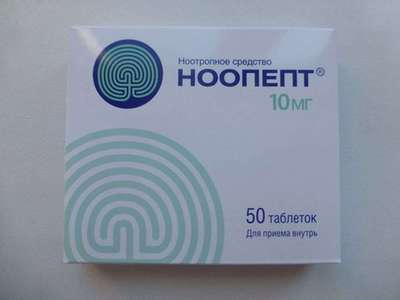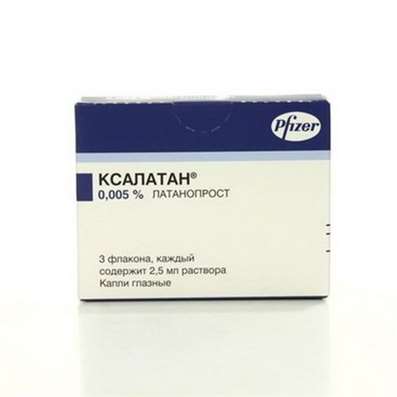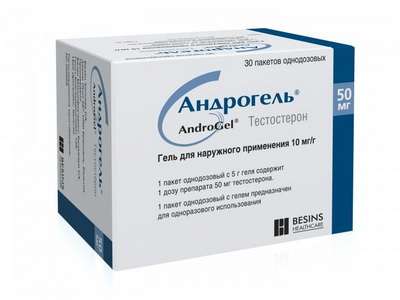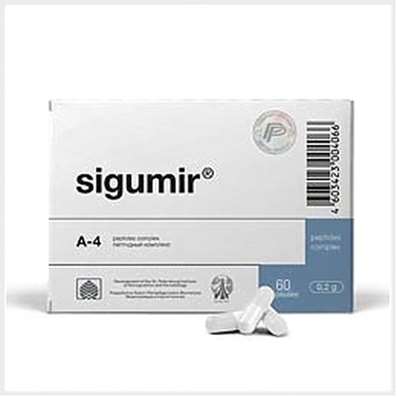Instruction for use: Citalopram 20mg
I want this, give me price
International Nonproprietary Name (INN): Citalopram
Pharmaceutic group: Antidepressants
Presentation:
Film-coated tablets 10 mg, 20 mg, 40 mg ¹30.
Available with prescription
Indications for Citalopram
Citalopram HBr is indicated for the treatment of depression.
Citalopram HBr is an orally administered selective serotonin reuptake inhibitor (SSRI) with a chemical structure unrelated to that of other SSRIs or of tricyclic, tetracyclic, or other available antidepressant agents. Citalopram HBr is available as tablets.
The mechanism of action of Citalopram HBr as an antidepressant is presumed to be linked to potentiation of serotonergic activity in the central nervous system (CNS) resulting from its inhibition of CNS neuronal reuptake of serotonin (5-HT). In vitro and in vivo studies in animals suggest that citalopram is a highly selective serotonin reuptake inhibitor (SSRI) with minimal effects on norepinephrine (NE) and dopamine (DA) neuronal reuptake. Tolerance to the inhibition of 5-HT uptake is not induced by long-term (14-day) treatment of rats with citalopram.
Citalopram has no or very low affinity for 5-HT1A, 5-HT2A, dopamine D1 and D2, α1-, α2-, and β-adrenergic, histamine H1, gamma aminobutyric acid (GABA), muscarinic cholinergic, and benzodiazepine receptors. Antagonism of muscarinic, histaminergic, and adrenergic receptors has been hypothesized to be associated with various anticholinergic, sedative, and cardiovascular effects of other psychotropic drugs.
Citalopram HBr should be administered once daily, in the morning or evening, with or without food.
The efficacy of Citalopram HBr in the treatment of depression was established in 4-6 week, controlled trials of outpatients whose diagnosis corresponded most closely to the DSM-III and DSM-III-R category of major depressive disorder.
A major depressive episode (DSM-IV) implies a prominent and relatively persistent (nearly every day for at least 2 weeks) depressed or dysphoric mood that usually interferes with daily functioning, and includes at least five of the following nine symptoms: depressed mood, loss of interest in usual activities, significant change in weight and/or appetite, insomnia or hypersomnia, psychomotor agitation or retardation, increased fatigue, feelings of guilt or worthlessness, slowed thinking or impaired concentration, a suicide attempt or suicidal ideation.
In clinical trials of Citalopram HBr, there were reports of citalopram overdose, including overdoses of up to 2000mg, with no associated fatalities. During the postmarketing evaluation of Citalopram HBr, citalopram overdoses, including overdoses of up to 6000 mg, have been reported. As with other SSRIs, a fatal outcome in a patient who has taken an overdose of citalopram has been rarely reported.
Trade name of the drug – Citalopram
Dosage Form: tablets
Active substance:
citalopram hydrobromide 12.5 mg, 25.0 mg and 50.0 mg, or 10 mg, 20 mg and 40 mg citalopram;
Excipients: microcrystalline cellulose 46.90 / 93.80 / 187.60 mg, pregelatinised starch 20.20 / 40.40 / 80.80 mg magnesium stearate 0.40 / 0.80 / 1.60 mg Opadry II [polyvinyl alcohol (1.28 / 2.56 / 5.12) mg macrogol (0.65 / 1.30 / 2.60) mg talc (0.47 / 0.94 / 1.88) mg titanium dioxide (0.80 / 1.60 / 3.20) mg] 3.20 mg / 6.40 mg / 12.80 mg.
Description:
Round tablets biconvex forms, film-coated white. The cross-sectional inner layer of white or white with a yellowish tinge.
Pharmacotherapeutic group: Antidepressants
ATX code: N06AB04
Pharmacological Properties of Citalopram
Pharmacodynamics
Citalopram - antidepressant, belonging to the group of selective inhibitors of serotonin reuptake (SSRIs). It has a pronounced ability to inhibit the reuptake of serotonin, has no or very poor ability to bind to a number of receptors including a gamma-aminobutyric acid receptors (GABA), the H1-histamine, D1- and the D2-dopamine; alpha 1, alfa2-, beta-adrenergic; benzodiazepine and m-cholinergic receptors, resulting in the almost complete absence of adverse effects such as negative chrono-, Drome and inotropic effect, orthostatic hypotension, sedation, and dry mouth. Citalopram only to a very small extent inhibits isozyme CYP2D6, and thus substantially does not interact with drugs metabolized by this enzyme. Thus, the side effects and toxic effects is shown to a much lesser extent.
The antidepressant effect usually develops after 2-4 weeks of treatment.
Citalopram has no effect on the serum levels of prolactin and growth hormone.
Citalopram not impair cognitive / intellectual function and psychomotor function, and practically no sedative effect.
Citalopram in doses higher than 40 mg per day can cause abnormal changes in the electrical activity of the heart (prolongation of the QT interval on an electrocardiogram).
Pharmacokinetics
The bioavailability of citalopram is 80% and is practically independent of food intake. The maximum concentration (Cmax) is achieved after a mean plasma 3 hours. Pharmacokinetics are linear dose-dependent manner when receiving single and multiple doses (doses in the range of 10-60 mg per day). When receiving one time per day equilibrium concentration in the plasma is established in 7-14 days of therapy. The volume of distribution - about 12-17 L / kg. Plasma protein binding - not more than 80%. The plasma is present in unchanged form. Penetrates into breast milk.
It metabolized by demethylation, deamination and oxidation with cytochrome P450 (CYP3A4 isozymes and CYP2C19, less CYP2D6) to form at least a pharmacologically active metabolite. Inhibition of one of these enzymes may be offset by other enzymes. The half-life time (T1 / 2) citalopram is 1.5 days (36 hours). Derivation is performed by the kidneys (15%) and liver (85%). 12-23% of citalopram appears unchanged by the kidneys. Hepatic clearance - about 0.3 L / min, the renal clearance - 0.05-0.08 l / min.
Patients aged over 65 years:
There is a longer half-life values and lower clearance by reducing the metabolism.
Insufficiency of liver function:
In patients with reduced hepatic function Citalopram is displayed more slowly. The half-life of citalopram is almost two times increased and the equilibrium plasma concentrations of citalopram is almost two times higher compared to patients with normal liver function after receiving the same dose.
Lack of renal function:
In patients with mild to moderate reduction of renal function excretion of citalopram is slower with no significant effect on the pharmacokinetics. In patients with severe renal insufficiency (creatinine clearance below 30 ml / min) requires caution.
IndicationsforCitalopram
Depressive episodes of moderate to severe. Panic disorder.
Contraindications for Citalopram
Hypersensitivity to citalopram or to any of the excipients included in the composition of the drug.
Citalopram should not be used in combination with monoamine oxidase inhibitors (MAOIs) including selegiline, moclobemide, linezolid (antibiotic), and for 14 days after cessation of administration. Treatment of MAO inhibitors can be started no earlier than 7 days after discontinuation of citalopram.
Citalopram is contraindicated in concomitant use with drugs that prolong the QT interval on an electrocardiogram (in particular, with pimozide), as well as congenital prolongation of the QT interval.
Children under 18 years of age a contraindication for the use of citalopram, as its efficacy and safety have not been established in this age group.
Pregnancy and lactation
Citalopram should not be prescribed to pregnant and lactating women, if the potential clinical benefit prevails over theoretical risk, since safety of the drug during pregnancy and lactation in women has not been established.
Citalopram Dosage and Administration
Citalopram is taken orally once a day (not liquid, squeezed small amount of liquid). The preparation can be applied at any time regardless of the meal, it is desirable to take the drug at the same time.
Depression:
Depression therapy begins with receiving 20 mg citalopram daily. Depending on the individual response of the patient and the severity of depression, the dose may be increased to a maximum - 40 mg per day.
Panic disorder:
In panic disorder for 1 week recommended dose - 10 mg per day, then the dose increased to 20 mg per day. The daily dose, depending on the individual patient's response, can be further increased to 40 mg per day.
Patients aged over 65 years:
The recommended daily dose for the elderly is 10-20 mg. Depending on the individual response and the severity of depression, the dose can be increased up to 20 mg per day.
Impaired renal function:
In chronic renal insufficiency of mild to moderate severity correct dosing regimen is required. In patients with severe renal impairment (creatinine clearance less than 30 mL / min) require a careful choice of dose.
Impaired liver function:
Patients with mild to moderate hepatic impairment initial dose is 10 mg daily for the first two weeks. Depending on the response the dose can be increased to 20 mg per day. In patients with severe liver failure requires extreme care in selecting the dosage.
Patients with low activity of isoenzyme CYP2C19:
In patients with low activity of CYP2C19 isozyme initial dose of 10 mg a day for two weeks. Depending on the response the dose can be increased to 20 mg per day.
Duration of treatment:
The effect is manifested after 2-4 weeks, the duration of treatment is determined by the condition of the patient, efficacy and tolerability of the therapy and an average of 6 months.
Features of the drug at its abolition:
Symptoms that can occur in a sharp lifting of citalopram, is not typical. It is most often dizziness, headache, paresthesia, sleep disturbance, fatigue, nervousness, tremor, nausea and / or vomiting.
In the case of completion of treatment Citalopram must be lifted gradually over several weeks to avoid the syndrome of "cancellation". In most cases it is enough to roughly 2 weeks, but in each case the doctor decides this question individually: some patients may need a period of 2-3 months or more.
Side effect ofCitalopram
Impaired renal function:
In chronic renal insufficiency of mild to moderate severity correct dosing regimen is required. In patients with severe renal impairment (creatinine clearance less than 30 mL / min) require a careful choice of dose.
Impaired liver function:
Patients with mild to moderate hepatic impairment initial dose is 10 mg daily for the first two weeks. Depending on the response the dose can be increased to 20 mg per day. In patients with severe liver failure requires extreme care in selecting the dosage.
Patients with low activity of isoenzyme CYP2C19:
In patients with low activity of CYP2C19 isozyme initial dose of 10 mg a day for two weeks. Depending on the response the dose can be increased to 20 mg per day.
Duration of treatment:
The effect is manifested after 2-4 weeks, the duration of treatment is determined by the condition of the patient, efficacy and tolerability of the therapy and an average of 6 months.
Features of the drug at its abolition:
Symptoms that can occur in a sharp lifting of citalopram, is not typical. It is most often dizziness, headache, paresthesia, sleep disturbance, fatigue, nervousness, tremor, nausea and / or vomiting.
In the case of completion of treatment Citalopram must be lifted gradually over several weeks to avoid the syndrome of "cancellation". In most cases it is enough to roughly 2 weeks, but in each case the doctor decides this question individually: some patients may need a period of 2-3 months or more.
overdose
Overdose symptoms: convulsions, drowsiness, tachycardia, bradycardia, hypotonia, or hypertension, nausea, vomiting, tremor, serotonin syndrome, agitation, dizziness, dilated pupils, stupor, sweating, cyanosis of the skin, heart failure, bundle branch block, hyperventilation , atrial fibrillation, ventricular fibrillation, coma.
Coma and fatal cases of citalopram overdose are extremely rare, most of them include simultaneous overdose with other drugs.
Overdose Treatment: there is no specific antidote. In case of overdose gastric lavage should be performed as soon as possible. Treatment is symptomatic and supportive. Recommended medical surveillance, with loss of consciousness and disturbance of respiration - intubation, as well as careful monitoring of ECG and other vital functions as a high risk of fatal arrhythmias accompanied by sinus tachycardia, nodal rhythm, QT prolongation, in particular, the possible development of arrhythmias such as "pirouette" , ventricular arrhythmia.
Interaction
Concomitant use is contraindicated:
With MAO inhibitors.
Concomitant treatment with MAO inhibitors is contraindicated (both non-selective and selective) with regard to the risk of serious side effects, including serotonin syndrome. Citalopram should not be used in combination, including, selegiline, moclobemide, linezolid (antibiotic), etc., and for 14 days after cessation of administration. Treatment of MAO inhibitors can be started no earlier than 7 days after discontinuation of citalopram.
With the means prolong the interval QT.
It is unacceptable to use drugs, prolongs the QT interval, such as antiarrhythmics (procainamide, amiodarone and OE), antipsychotics / neuroleptics (eg phenothiazines, pimozide, haloperidol), tricyclic antidepressants and SSRIs (fluoxetine), antimicrobials (macrolide antibiotics and their analogs, such as erythromycin, clarithromycin, quinolone derivatives and fluoroquinolones: sparfloxacin, moxifloxacin, pentamidine) blockers H1-histamine receptor (astemizole, mizolastine), antifungals azole (ketoconazole, fluconazole), domperidone, ondansetron, as citalopram doses greater than 40 mg per day can cause abnormal changes in the electrical activity of the heart (prolongation of the QT interval on an electrocardiogram), and disrupt heart rhythm (including the development of arrhythmias of the type "pirouette"), which can be fatal.
Pimozide.
The simultaneous use of citalopram and pimozide is contraindicated, because their combined use prolongs the QT interval. This also applies to tools such as amitriptyline, maprotiline, venlafaxine terfenadine, haloperidol, droperidol, chlorpromazine, thioridazine.
The combined use of Citalopram should be done with caution:
Citalopram can lower the seizure threshold. It requires caution while taking other means of lowering the seizure threshold (tricyclic antidepressants, SSRIs, neuroleptics - phenothiazine derivatives, thioxanthene and butyrophenone, mefloquine and tramadol).
With simultaneous use of citalopram and tryptophan reported cases enhance the action of the drug. It is advisable not to combine with taking citalopram serotonergic drugs such as sumatriptan or other triptans and tramadol.
The simultaneous use of citalopram and preparations containing St. John's wort (Hypericum perforatum) may lead to increased side effects.
With simultaneous application of cimetidine causes a moderate increase in the equilibrium concentration of citalopram in the blood. Therefore, caution is advised in the appointment of the maximum dose of citalopram simultaneously with the use of high doses of cimetidine.
With simultaneous use of citalopram with indirect anticoagulants and other agents that affect blood clotting (atypical antipsychotics and phenothiazines derivatives, the majority of tricyclic antidepressants, acetylsalicylic acid and non-steroidal anti-inflammatory drugs, ticlopidine and dipyridamole) may have problems with blood clotting. In such cases, when the beginning or end of citalopram therapy requires regular monitoring of blood clotting.
When concomitant administration with warfarin the prothrombin time increases by 5%.
There was no interaction with alcohol citalopram. However, as is the case with other psychotropic drugs, the simultaneous use of citalopram and alcohol is not recommended.
In in vitro studies revealed that citalopram is converted into its demethylated derivatives involving CYP2C19 isozyme, and CYP3A4, as well as with a small contribution isozyme CYP2D6. It proved that inhibition of an enzyme can be compensated by other enzymes. The inhibitory effect of citalopram these and other cytochrome P450 isozymes are weak or negligible, so citalopram has a low ability to clinically relevant drug interactions known for this situation. However, care is needed if citalopram administered with drugs that are metabolized mainly isoenzyme CYP2D6, and thus have a low therapeutic index. Although the clinical data for multiple-dose pharmacokinetic studies are not available, there are in vitro data (a model of human liver microsomes) which show formation of demethylated derivatives deceleration citalopram 45-60% and 75-85% compared to the control after the addition of the omeprazole and ketoconazole respectively. It may prove necessary in these cases, care in assignment together with citalopram such strong inhibitors of CYP3A4, as ketoconazole, itraconazole, fluconazole, or such strong inhibitors of CYP2C19, as omeprazole, esomeprazole, fluvoxamine, ticlopidine, lansoprazole, as their co-administration with citalopram may significantly reduce the clearance of citalopram. Therefore, the maximum recommended dose of citalopram for patients taking drugs together isozyme of CYP2C19 inhibitors, should not exceed 20 mg / day, including due to the fact that the increased risk of QT interval prolongation.
The combined use of citalopram with imipramine or desipramine does not affect the concentration of imipramine and citalopram, but increases the concentration of desipramine; It may be required dose correction desipramine.
special instructions for Citalopram
Children under 18 years of age a contraindication for the use of citalopram, as its efficacy and safety have not been established in this age group.
Due to the possibility of suicide attempts in patients with depression requires careful monitoring of patients in the early treatment and appointment of the minimum effective dose to reduce the risk of overdose. This precaution should be observed in the treatment of other psychiatric disorders because of the simultaneous disease depressive episode.
Major depression is peculiar risk of suicidal actions, which may persist until significant remission. In this regard, at the beginning of the treatment with a combination of drugs from the group of benzodiazepines or neuroleptic drugs and the constant medical supervision (charging proxies storage and issuing of drugs) may be indicated. In the treatment of panic disorder with the appointment of antidepressants and / or benzodiazepines, some patients in response to the initiation of treatment is greatly enhanced anxiety or anxiety. This condition (called experts "pathological disinhibition" or simply "paradoxical anxiety", the term itself has not yet been approved) is regarded as a rare phenomenon, although the pathological reaction has been repeatedly documented in the scientific literature. This "paradoxical anxiety" usually decreases during the first few weeks after starting treatment. It is recommended to start with a low dose to reduce the risk of paradoxical anxiety. Cancel the drug is recommended in this case, if such a paradoxical reaction for a long time does not disappear, and if such complications of therapy exceed the benefits of the treatment.
In children, adolescents and young adults (under 24 years) with depression and others. Mental disorders antidepressants compared to placebo, increased the risk of suicidal thoughts or suicidal behavior. Therefore, the appointment of citalopram or any other antidepressant in these patients should be related to the risk of suicide and the benefits from their use. In short-term studies in people older than 24 years, the risk of suicide did not increase, and in people over 65 years is somewhat reduced. During antidepressant treatment all patients should be monitored for early detection of suicidal tendencies.
Citalopram should be used with caution in patients with renal insufficiency (creatinine clearance below 30 ml / min), hypomania, mania, pharmacologically uncontrolled epilepsy, depression with suicidal attempts, diabetes, cirrhosis of the liver, the propensity to bleeding; concomitantly with drugs that reduce the seizure threshold and cause hyponatremia, and ethanol, as well as with drugs metabolized by isoenzyme CYP2C19.
Citalopram may cause a dose-dependent lengthening of the interval QT, which can lead to irregular heartbeat.
Hyponatremia develops due to disorders of secretion of antidiuretic hormone, especially a high level of risk in older women.
Citalopram treatment can alter glycemic control in patients with diabetes mellitus. Dose of insulin and / or oral hypoglycemic agents to be adjusted.
Rarely possible development of akathisia, characterized by continuous or periodic emerging sense of inner motor restlessness, and manifests itself in the inability to sit still for a long time in one position for a long time, or remain motionless. Taking place during the first weeks of treatment.
Patients with bipolar disorder may experience delusions. Then treatment with citalopram should be discontinued.
It should be used with caution in the presence of citalopram drug dependence (including history) and epileptic seizures in history.
Citalopram should not be used in combination with monoamine oxidase inhibitors (MAOIs) (see. "Contraindications" and "Interaction with other medicinal products").
When mild to moderate severity renal impairment dose adjustment is required in severe renal impairment require caution. If abnormal liver function taking the drug restrict the minimum recommended dose. In elderly patients require a dose reduction of citalopram.
With the development of mania drug should be discontinued.
Clinical experience simultaneous use of SSRIs and electroconvulsive therapy is not sufficient, so caution is required.
Early treatment can occur insomnia and feelings of anxiety that may be solved by correcting the initial dose.
Abrupt discontinuation of citalopram therapy can lead to the syndrome of "cancellation". There may be adverse reactions such as dizziness, headaches, and nausea. To avoid the syndrome of "cancellation" necessary phasing out of the drug for a few weeks.
The use by pregnant women, women in lactation:
Citalopram should not be prescribed to pregnant and lactating women, if the potential clinical benefit prevails over theoretical risk, since safety of the drug during pregnancy and lactation in women has not been established.
The use of citalopram in the third trimester of pregnancy can have a negative impact on the psycho-physical development of the newborn. The following disorders in newborns whose mothers took selective serotonin reuptake inhibitor until delivery: respiratory distress, cyanosis, shortness of breath, seizures, temperature instability, feeding difficulty, vomiting, hypoglycemia, muscle hypertonia or hypotonia, hyperreflexia, tremor, nervousness, irritability, lethargy, constant crying, somnolence and insomnia.
Epidemiological evidence suggests that the use of SSRIs in pregnancy, particularly in late pregnancy, may increase the risk of persistent pulmonary hypertension of newborns. The observed risk was 5 cases per 1000 pregnancies. In the general population, the risk of from 1 to 2 cases of persistent pulmonary hypertension of pregnancies per 1000 infants.
Such violations may indicate serotonergic effects or the occurrence of the syndrome of "cancellation". In the case of citalopram during pregnancy should not be taking it abruptly interrupted.
Information on the possible impact of the drug on the ability to drive vehicles, mechanisms:
Citalopram should be used with caution in patients whose activities are connected with machinery or a vehicle control. Citalopram did not reduce intellectual capacity and speed of psychomotor reactions, however, patients can expect a decrease in attention and concentration due to existing diseases, side effects of the treatment or a combination of both.
Release form of Citalopram
Film-coated tablets 10 mg, 20 mg and 40 mg.
10 tablets in blisters of PVC film and aluminum foil printed patent.
1, 2, 3, 4 or 5, the contour of cellular packaging together with instructions for use are placed in a pile of cardboard.
Storage conditions of Citalopram
In a dry, dark place at a temperature no higher than 25 ° C.
Keep out of the reach of children.
Shelf life of Citalopram
3 years.
Do not use beyond the expiration date printed on the package.
Conditions of supply of Citalopram from pharmacies
With prescription.

 Cart
Cart





